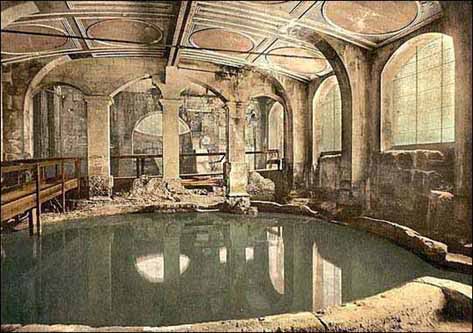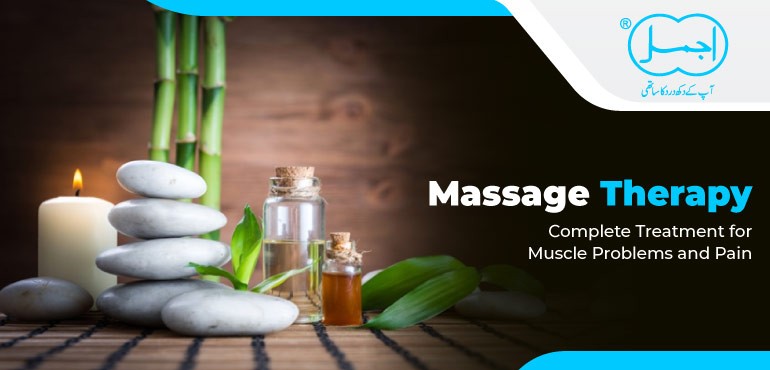Hydrotherapy (حمام) is a part of alternative treatment that is mainly used for health conditions such as depression, injury, pain and discomfort problems. In this type of treatment, a number of diseases are treated by different forms of water. Hydrotherapy has been used for ages to treat different ailments. Hydrothermal therapy also employs its temperature effects, as in hot and cold baths, saunas, wraps, etc, and in all its forms-solid, fluid, vapor, ice, and steam, both internally and externally. Water is incontestably the most primeval of all counteractive agents for different disorders. This immense healing agent has now been classified and made into a science. Hydraulic applications are usually given at different temperatures.
In Hydrotherapy, or utilization of an aquatic setting for assisting with overseeing torment, has been utilized since old ages, and more recently its utilization has expanded all over again. The decrease in pain and increase in function is achieved by using the biodynamic and physiologic chattels of water.
Currently, there are various treatments and therapies that are used under the category of hydrotherapy which includes underwater massage, mineral baths, sauna baths, or whirlpool baths, hot Roman bath, hot tub, Jacuzzi, cold plunge, and mineral bath.
What is Hydrotherapy used for?
Mostly the hydrotherapy is used to treat many ailments and conditions such as acne, blisters; arthritis, COLDs, stress muscles, depression, headaches, pain, stomach problems, joints, muscle aches, nerve tension problems, sleep disorders as well as stress-related issues. Generally, people also use it for relaxation and to maintain overall health.
How Does Hydrotherapy Work?
Hydrotherapy depends on its mechanical and warm impacts, to initiate recuperating. It makes use of the body’s response to cold or hot reactions, the pressure applied by water, the prolonged application of heat, and additionally the sensation of the water. These sensations and impacts are then conveyed further into the skin by nerves.
At the point when this occurs, these sensations invigorate the immune system, consequently affecting the arrival of stress hormones, while improving digestion, blood flow, as well as decreasing the body’s affectability to pain. Most of the time, heat is utilized to alleviate and calm the body, while hindering the action of interior organs.
Conversely, cold is utilized to revitalize and stimulate, consequently expanding the body’s internal movement. Hence, if you are experiencing uneasiness and stressed muscles, you should bathe with hot temp water. And if you are experiencing tiredness and stress, you should bathe with hot water, followed by a short cold shower to stimulate your body and mind.
When you are submerged in water in a pool or a shower, you experience some sort of lightness. Throughout this time, the water alleviates the body of gravity’s effects. Likewise, water prompts a feeling of massage on the body, as it manipulates your body. Moving water rejuvenates the skin’s sensory receptors. This increases the blood flow while alleviating the stress from muscles.
History of Hydrotherapy
The utilization of water remedially (hydrotherapy) is quite old. The Rigveda illustrates simple hydrotherapy treatments. Additionally, the therapeutic use of water was also portrayed in scriptural records. Hippocrates, a Greek physician of the Age of Pericles, widely depicted hydrotherapy in his works and was vociferous in his praise, taking note of that “for the bath calms the pain in the side, neck, back, and shoulders; removes the phlegm, improves the respiration, promotes expectoration, and mollifies fatigue: for it relieves the joints and external skin, and is diuretic, eliminates the heaviness of head, and moistens the nose” (Hippocrates 1955). Hippocrates viewed the application of water for healing as a basic part of his regimen, along with diet, exercise, management, and herbs.
Principles of Blood Circulation in Hydrotherapy
To advance healing either locally or systematically, hydrotherapy medicine plan to boost the flow of very much oxygenated, supplement-rich blood which likewise has the impact of diverting metabolic and other byproducts. The blood flow ratio and blood volume can be either amplified or reduced through specific organs or areas of the body. It should likewise be noticed that beyond research conducted during hydrotherapy’s popularity in the mid-twentieth century, there has been a minimal further physiological investigation into hydrotherapy effects.
Effects of Hydrotherapy
The utilization of water has numerous physiologic and psychological effects. These effects are seen on the cardiopulmonary, circulatory, autonomic, and renal systems. Hydrotherapy is highly recommended to patients with musculoskeletal problems.
The main curative impacts of hydrotherapy are the advancement of muscle relaxation with reduced muscle spasms and expanded ease of joint movement. Furthermore, reduced pain sensitivity, the decline in gravitational forces, increase in blood circulation, increase in muscle strength, and improved balance can be useful in the recovery of patients with ongoing pain.
Water-based treatment allows the patient with pain and discomfort to work out in a protected and controlled environment and possibly can be used in the treatment and rehabilitation of all musculoskeletal problems. Patients who can’t endure exercises on dry surfaces can get benefit from an activity program in water. The diverse water-based exercise programs are recommended based on the severity, body attributes, general health conditions, and requirements of the patient. Hydrotherapy activity programs have been used with achievement in the treatment of hip or knee osteoarthritis, discomfort, and backache. These aquatic exercises additionally have been proposed for weight loss.
Is Hydrotherapy Similar To Spa Therapy?
Spa therapy depends on the hypothesis that the mineral substance of spa water has unique health properties. In many European countries, hydrotherapy frequently performed in spa water. Despite the fact that there’s some research that proposes the mineral substance of the water may have an effect, different examinations show that hydrotherapy has huge advantages despite the water used.
How effective is Hydrotherapy?
Scientific examinations also have revealed that hydrotherapy can improve strength and general wellness in individuals with different sorts of joint pains. The activities can be modified to your individual requirements, so you can begin to step by step develop your fortitude and adaptability.
The additional help that the water gives may cause you to feel like you can carry out more exercise than usual, so be mindful so as not to try too hard. The exercise and the warmth of the water may cause you to feel tired after treatment, yet this is very ordinary. As a rule, hydrotherapy is probably the most secure way of treatment for joint inflammation and backache.
Bathing appropriately with clean cold water is an amazing form of hydrotherapy. Such baths open up all the justify of the skin and make the body feel fresh. In the cold bath, all muscles of the body get enacted and the blood flow improves after a bath. It is the most malleable form for delivering the thermic and perfunctory effects that are required and can be applied to a limited area or to the full-body surface.
It is equipped for engrossing warmth and furthermore gives out heat with incredible promptness. It can be utilized either for abstracting heat from the body or conveying heat to the body subsequently. In spite of the fact that cool water is predominantly utilized, the intention isn’t to remove or decrease the real warmth, however, to expand the imperative ability to create more warmth than what is lost.
Being a universal solvent, it’s utilized internally, as Enema or Colonic Irrigation or Water drinking help enormously in the disposal of uric acid, urea, salts, excessive sugar, and many other blood and food chemicals that are byproducts.
It ought to likewise be noted that the effective utilization of these techniques needs a specific degree of indispensable power. Where that power is too low, these are futile. As in intense conditions, there is a more serious level of vital power, and therefore there is a chance of an indispensable reaction. In chronic cases, where the essential power is lower, these baths are less valuable; however, in such cases, the packs are helpful in light of the fact that they are placid in their application.
Types of Hydrotherapy
Hydrotherapy is divided into two main types. Here are the two main categories;
- External Hydrotherapy
- Internal Hydrotherapy
- External Hydrotherapy
External hydrotherapy is the application of water and ice to the human body. External hydrotherapy also involves the sinking of the human body in water. Therefore it aims at employing temperature-based hydrotherapy practices, such as the outcomes of cold and hot water on human skin and tissues. Employing these hydrotherapy practices, hot water helps produce sweating and lightens up the stressed muscles. It is a very effective method of treating bad blood circulation, arthritis, rheumatism, and sore muscles and tendons, and is often combined with aromatherapy.
Internal Hydrotherapy
On the other side, hydrotherapy with cold water helps to encourage underlying muscles, as well as blood flow to the skin. It also reduces stress from the muscles and provides them with a soothing and calming effect. There are many other hydrotherapy treatments that can treat many other health conditions. These hydrotherapy treatments include the application of moist and cold heat to specific parts of the human body. The hot moist treatment is also known as a fomentation, which is very helpful for the treatment of flu, COLD, and arthritis. Ice packs or cold compresses are normally used to alleviate pain connected with dental surgery, headaches, and sprains caused by accidents.
External Hydrotherapy
Similarly, body packs help to serene psychiatric and mentally unwell patients. This type of hydrotherapy also helps detoxify. External hydrotherapy is conducted in a variety of ways. A sitz bath is one of the most common procedures of external hydrotherapy. In sitz bath therapy, the patient sits in a uniquely made bath, where the lower extremity is fully sunken in water. Mainly this procedure has been used to treat menstrual cramps, abdominal discomforts, hemorrhoids, and other GU problems. High-pressure water massage therapy is also used to strengthen the body and muscles. This method is used to relieve stress and anxiety.
Internal Hydrotherapy
This form of therapy includes enemas and colonic irrigation. Steam baths are also good examples of internal hydrotherapy. Colonic irrigation involves cleaning the entire bowel. This helps to cure numerous digestive problems and conditions. Douching is another type of internal hydrotherapy. It directs a water stream straight to the vagina to cleanse the area. However, many practitioners do not recommend this form of hydrotherapy.
Benefits and Physiological Effects of Hydrotherapy
The recuperative and healing properties of hydrotherapy are based on its mechanical and/or thermal effects. It exploits the body’s reaction to hot and cold stimuli, to the protracted application of heat, to pressure exerted by the water, and to the sensation it gives. The nerves carry impulses felt at the skin deeper into the body, where they are instrumental in stimulating the immune system, influencing the production of stress hormones, invigorating the circulation and digestion, encouraging blood flow, and lessening pain sensitivity. Generally, heat quiets and soothes the body, slowing down the activity of internal organs. Cold, in contrast, stimulates and invigorates, increasing internal activity.
Its mechanical action occurs during the bath when the bodyweight decreases by 50- 90% when submerged in a bath, a pool, or a whirlpool, experiences a kind of weightlessness. The body is relieved from the constant pull of gravity. Water also has a hydrostatic effect. It has a massage-like feeling as the water gently kneads your body. Water, in motion, stimulates touch receptors on the skin, boosting blood circulation and releasing tight muscles.
Cold Application is defined as the therapeutic application of any substance to the body that removes heat from the body, resulting in decreased tissue temperature. Cold application decreases tissue blood flow by causing vasoconstriction and reduces tissue metabolism, oxygen utilization, and inflammation, and muscle spasm. Topical cold treatment decreases the temperature of the skin and underlying tissues to a depth of 2 to 4 cm, decreasing the activation threshold of tissue nociceptors (pain receptor) and the conduction velocity of pain nerve signals. This results in a local anesthetic effect called cold-induced neuropraxia, a type of peripheral nerve injury.
Thermotherapy is the therapeutic application of any substance to the body that adds heat to the body resulting in increased tissue temperature. Heat therapy is delivered by three mechanisms: conduction, convection, or conversion. Increased blood flow facilitates tissue healing by supplying protein, nutrients, and oxygen at the site of injury. A 1ºC increase in tissue temperature is associated with a 10% to 15% increase in local tissue metabolism. This increase in metabolism aids the healing process by increasing both catabolic and anabolic reactions needed to degrade and remove metabolic by-products of tissue damage and provides the milieu for tissue repair.




